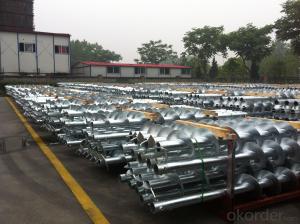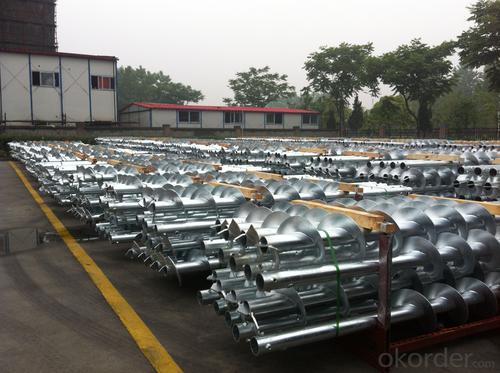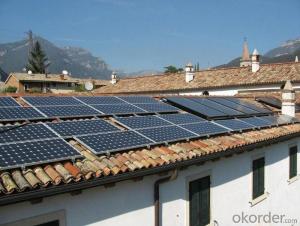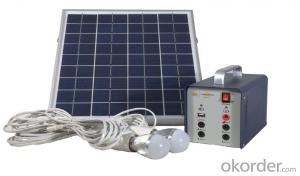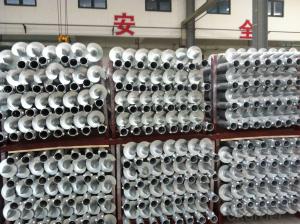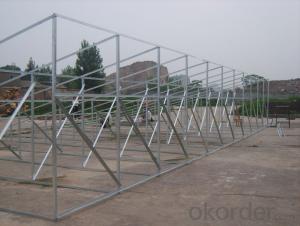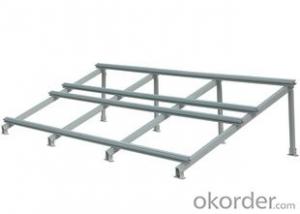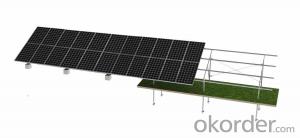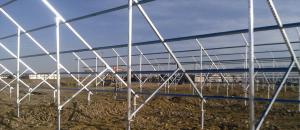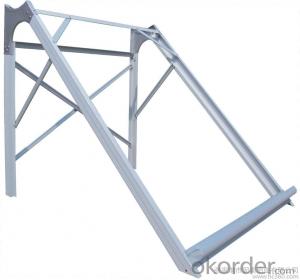Solar Energy Systems Brooklyn NY Solar Mounting System Screw Pile
- Loading Port:
- China Main Port
- Payment Terms:
- TT OR LC
- Min Order Qty:
- -
- Supply Capability:
- -
OKorder Service Pledge
OKorder Financial Service
You Might Also Like
Packaging & Delivery
Packaging Detail:Normal package seaworthy
Delivery Detail:15 days
Specifications
Easy installation Competitive price TUV&SGS test report & CSA certification 15-warranty
Specifications
1) Super smooth beautiful appearance,outstanding quality,large supply.
2) Available in customized surface finishes.
3) Well machined,for example,cutting,drilling and milling with excellent tolerance.
4) Meet with customer’s designs and supply you best price.
5)Usages:Supply for solar panel modules.
Technical characteristics
Installation site:
ground,hillside,and grassland
Installation angle
it is based on customers’ requirements
Installation height
it is basedon customers’ requirements
Solar panel type; with or without frame
Components arrangement :horizontal or vertical
Support track
aluminum alloy extrusion
Quality warranty
15 years
Advantages
1)Quick installation: with high degree of pre-installed rate, the system could be easily installed by using galvanized carbon steel rails for PV Stent, and specially designed connection parts of the PV bracket, which could reduce installation time and cost greatly.
2)Offer unmatched durability: with all structural components comprised of high class stainless steel and anodized aluminum alloy, it is designed for 25 years service life and backed by 15 years warranty.
3)Stand up to extreme weather: The SuninTek solar mount is designed to stand up to the extreme weather complied with the AS/NZ 1170 and other international structure load standard by the skilled engineer. The main support components also have been tested to guarantee its structure and load-carrying capacity.
4)Provide broad installation flexibility: These systems accommodate most commercially available framed solar panels , and they can scale easily from small to large, multi-megawatt installations.
5)Diversified Application: The PV mounting system produced can be adopted by various types of PV cells panels which you can find in the market. It can serve for both mini solar power system and huge plant with megawatt capability.
Main features
1. Installation cost savings.
2. Save installation time.
3. Increase the mechanical strength of solar energy mounting to ensure that wind requirements.
4. The outdoor for installation of solar energy.
5. Length can be customized according to customers.
6. Service life of up to 25 years.
7. Products through the international certification.
8. Stent material composition of the galvanized steel and aluminum.
9. 15 years system and structural guarantee.
10.Flexible post spacing withstands different wind & snow loads.
11. High quality material in Aluminium 6005-T5 and SUS 304.
12.Screws and nuts go with every components needed.
13.Mechanical calculation and reliability tested to ensure highest product quality.
- Q: How does the location of a solar energy system affect its performance?
- The location of a solar energy system has a significant impact on its performance. Various factors such as latitude, climate, shading, and orientation play a crucial role in determining the efficiency and effectiveness of a solar energy system. Firstly, the latitude of the location affects the amount of solar radiation received. Areas closer to the equator receive more direct sunlight throughout the year, resulting in higher solar energy production. Conversely, regions located further away from the equator receive less direct sunlight and may experience lower solar energy generation. Climate also influences the performance of a solar energy system. Regions with clear skies and ample sunshine tend to have higher solar energy potential compared to areas with frequent cloud cover or a higher number of rainy days. Additionally, extreme temperatures can also impact the efficiency of solar panels, as excessive heat can reduce their output efficiency. Shading is another crucial factor to consider when installing a solar energy system. Shadows from nearby buildings, trees, or other obstructions can significantly decrease the amount of sunlight reaching the solar panels. Even partial shading on a small portion of the panels can disproportionately impact the overall system's performance, resulting in reduced energy production. The orientation of the solar panels also affects system performance. The ideal orientation for solar panels is typically facing south in the Northern Hemisphere and north in the Southern Hemisphere. This allows panels to receive the maximum amount of sunlight throughout the day. However, deviations from the optimal orientation can still be efficient, albeit with slightly reduced performance. In conclusion, the location of a solar energy system has a direct impact on its performance. Factors such as latitude, climate, shading, and orientation all influence the efficiency and effectiveness of solar energy production. Considering these factors during the planning and installation process is crucial to maximizing the potential of solar energy systems.
- Q: How do solar energy systems contribute to job creation?
- Solar energy systems contribute to job creation in several ways. Firstly, the installation and maintenance of solar panels require skilled workers, creating job opportunities for engineers, technicians, and electricians. Secondly, the manufacturing of solar equipment, such as panels and inverters, creates employment in the manufacturing sector. Additionally, as solar energy becomes more popular, new business opportunities emerge, leading to job growth in the solar industry. Overall, the transition to solar energy not only promotes sustainable and clean energy sources but also stimulates job creation across various sectors.
- Q: What is the impact of saltwater exposure on solar panels?
- Saltwater exposure can have a detrimental impact on solar panels. The salt in seawater can corrode the panels' metal components, such as the frames and connectors, leading to reduced efficiency and potential damage. It can also cause the glass surface to become hazy, which restricts sunlight penetration and lowers energy production. Proper maintenance, such as regular cleaning and protective coatings, is necessary to mitigate the negative effects of saltwater exposure on solar panels.
- Q: Can a solar energy system be expanded in the future?
- Yes, a solar energy system can be expanded in the future. One of the major advantages of solar energy systems is their scalability. You can start with a small system and then gradually expand it as your energy needs grow or as you have the resources to invest in a larger system. There are several ways to expand a solar energy system. One way is to add more solar panels to increase the overall capacity of the system. This can be done by installing additional panels on the same roof or by utilizing additional roof space or ground-mounted systems. Another way is to add more battery storage capacity to store excess energy generated during the day for use during the night or when the sun is not shining. Furthermore, advancements in technology and decreasing costs make it easier to expand solar energy systems. Solar panels and other components are becoming more efficient, allowing for higher energy production from the same amount of space. Additionally, the cost of solar panels has significantly decreased over the years, making it more affordable to add more panels to an existing system. Expanding a solar energy system can also have financial benefits. By increasing the capacity of the system, you can generate more electricity and potentially offset a larger portion of your energy consumption, leading to greater savings on your electricity bills. In some cases, if you generate more electricity than you consume, you may even be able to sell the excess energy back to the grid and earn credits or monetary compensation. In conclusion, a solar energy system can be expanded in the future. The scalability of solar energy systems allows for the addition of more panels or storage capacity to meet growing energy needs. Advancements in technology and decreasing costs further facilitate the expansion of solar energy systems, making it an attractive option for those looking to increase their reliance on renewable energy sources.
- Q: How do solar energy systems affect water quality?
- Solar energy systems have a minimal impact on water quality. Unlike other forms of renewable energy, such as hydropower, solar energy systems do not require water for their operation. This means that they do not directly contribute to water pollution or degradation. However, it is important to consider the potential indirect impacts during the manufacturing and disposal of solar panels, which may involve the use of chemicals and materials that can affect water quality if not managed properly. Overall, the environmental benefits of solar energy greatly outweigh any potential water quality concerns.
- Q: What are the different types of solar panels used in solar energy systems?
- The different types of solar panels used in solar energy systems include monocrystalline, polycrystalline, thin-film, and bifacial panels. Monocrystalline panels are made from a single crystal structure, providing high efficiency but at a higher cost. Polycrystalline panels are made from multiple crystal structures, offering slightly lower efficiency but at a more affordable price. Thin-film panels are made by depositing a thin layer of semiconductor material onto a substrate, making them lightweight and flexible. Bifacial panels have the ability to capture sunlight from both sides, enhancing their energy output.
- Q: Can solar energy systems be used in areas with limited access to solar tracking systems?
- Yes, solar energy systems can still be used in areas with limited access to solar tracking systems. While solar tracking systems can optimize energy generation by following the sun's movement throughout the day, they are not a requirement for solar energy systems to function. Solar panels can still generate electricity even without tracking systems by capturing sunlight during daylight hours. Additionally, advancements in fixed-tilt solar panels and other technologies have improved their efficiency, making them suitable for areas with limited access to solar tracking systems.
- Q: Can solar energy systems be used in powering water pumps?
- Yes, solar energy systems can be used to power water pumps. Solar panels can generate electricity from sunlight, which can be used to run water pumps and provide a sustainable and renewable source of energy for pumping water. Additionally, solar-powered water pumps are often more cost-effective and environmentally friendly compared to traditional fuel-powered pumps.
- Q: How does the size of a solar energy system affect its performance?
- The size of a solar energy system directly affects its performance as it determines the amount of electricity it can generate. A larger system with more solar panels can produce a greater amount of energy, resulting in higher performance and increased ability to meet electricity needs. Conversely, a smaller system may not generate enough energy to fully power a home or business, leading to lower performance and potential reliance on other sources of electricity.
- Q: How do solar energy systems impact the reliability of the electricity supply?
- Solar energy systems can have a positive impact on the reliability of the electricity supply. By diversifying the energy sources used for generating electricity, solar systems can help reduce dependence on traditional power plants, which are susceptible to outages and disruptions. Additionally, solar energy is abundant and renewable, meaning it can provide a consistent and reliable source of electricity as long as sunlight is available. However, the intermittent nature of solar power can pose challenges, especially during nighttime or cloudy days. To mitigate this, advanced grid management techniques and energy storage systems are being developed to ensure a reliable electricity supply even when solar generation is limited.
Send your message to us
Solar Energy Systems Brooklyn NY Solar Mounting System Screw Pile
- Loading Port:
- China Main Port
- Payment Terms:
- TT OR LC
- Min Order Qty:
- -
- Supply Capability:
- -
OKorder Service Pledge
OKorder Financial Service
Similar products
Hot products
Hot Searches
Related keywords
